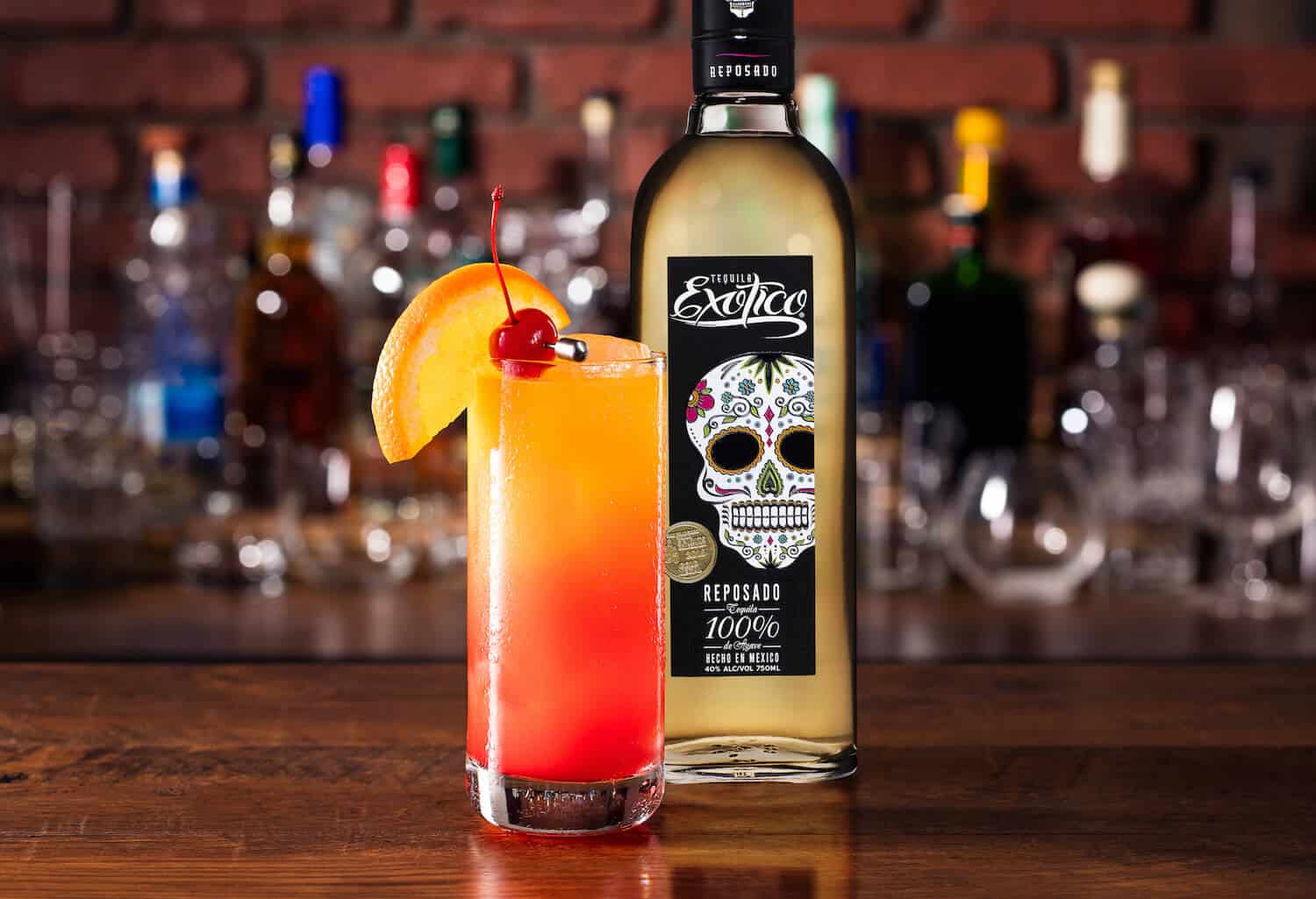BLANCO OR REPOSADO? PICKING THE PERFECT TEQUILA FOR YOU
By now you probably know that tequila is good for more than Margaritas and doing shots long after you should have known better. You may have even navigated the liquor store or supermarket aisles only to encounter dozens of brands and types of tequila. We’re here to make sense of all this, and help you decide what makes a tequila worthy of an honored place in your glass or behind your bar.
To make things simple, there are four main classifications of tequila—blanco, reposado, añejo and extra añejo. The difference between them comes down to aging. Today we’ll do a deep dive into what makes a tequila a good tequila, and what makes a reposado a reposado.
Before we go there, why tequila instead of something else? We may be a little biased, but there are plenty of good reasons to consider.
An Indigenous Spirit
Tequila is a truly American drink with a long history—North American, that is. The origins began over 2,000 years ago when the indigenous peoples of Mexico enjoyed a traditional drink made from the fermented juice of the native blue agave plant. In the sixteenth century the Spaniards arrived, bringing with them the practice of distilling spirits. This eventually led to the creation of tequila—a unique spirit derived from the ancient practice of cooking and fermenting the agave plant.
Necessity Brought Tequila North
Tequila first made its way into the U.S. in the latter part of the nineteenth century. During prohibition, states lucky enough to border Mexico were able to procure the local agave-based spirit from their southern neighbors on the sly. This led to tequila being a favorite of drinkers in the southwest United States. Liquor shortages occurred again during WWII when domestic distilleries switched from spirits to industrial production to help the war efforts. As a result, tequila exports to the U.S. skyrocketed to 1.2 million gallons in 1945.
Blanco and Reposado: Spirits from the Same Origins
Let’s start at the very beginning of the process. Which is a very good place to start because both Exotico Blanco and Exotico Reposado begin their lives in exactly the same way. Both are handcrafted with tradition by Destiladora González Lux (DGL). Their skill and dedication to craft results in Exotico—an award-winning tequila that rises above the ordinary.
So how, exactly, does it all begin? First, blue agave is harvested from a very specific part of Mexico known as Jalisco—one of the Appellation of Origin territories for tequila. For Exotico it gets even more specific than that. We use Weber Blue Agave, grown in the beautiful, red soil highlands of Jalisco.
From these plants only the sugary, sweet hearts of the plant, called piñas, are used. The agave is cut and trimmed by skilled harvesters known as jimadors using a spade-like tool called a coa. The piñas, each one weighing anywhere from 80 to 200 pounds, are loaded onto wagons to make the trip back to the destiladora for cooking, fermenting and distilling.
Next, the piñas are cut into pieces and placed into large stainless steel ovens called autoclaves where they are steam-roasted for approximately sixteen hours until they are soft and the sugar content is heightened. Once they are ready, the cooked agave is milled using the molino process and the agave juice, known as “agua miel” can be extracted. It’s this juice, with its sweet, fruity aroma that will enrich the final product.
The final tequila-making steps are fermentation and distillation. Fermentation begins with the addition of Exotico’s own yeast that comes from a proprietary family recipe. Not all distilleries create their own yeast, but this attention to detail is what distinguishes both Exotico Blanco and Reposado from ordinary tequilas.
After fermentation, Exotico is twice-distilled using traditional pot stills by the Master Distiller to obtain the richest parts of the “spirits” to produce their distinctive flavor. And now, we have a crisp, clear tequila that is ready to be bottled as blanco.
But not all of this blanco tequila is bottled and shipped away. A portion of it is placed into wooden barrels and left to age. This is the tequila that is destined to become reposado.
The Exotico Reposado Difference
Reposado actually means “rested” in Spanish and refers to how the tequila relaxes and matures inside the barrel. The liquid will take on some of the flavors of the wood as it turns a honey-like amber color. Unlike some cognacs or Scotch whiskies, which can age for several years, reposado tequilas spend less time in the barrel to achieve optimal character. Exotico Reposado ages for over six months instead of the usual two, in white oak bourbon barrels. This enhances and mellows the taste and aroma of the tequila. The result is a smooth, light amber reposado with hints of vanilla, dry fruit and spices with a finish of oak and wood.
It’s All Good, But How Do I Choose? Let’s Break It Down.
Exotico Blanco has a crisp, herbal aroma and the robust taste of fresh agave, herbs and just a hint of pepper. It finishes with a fresh wave of heat, followed by a bit of spice. It’s ideal for light, citrus cocktails like Margaritas or Palomas. Choose blanco for vibrant, fruit-forward drink recipes for both its clarity and flavor profile. Try blanco in our Tangerine Ginger Margarita and you’ll see what we mean (find the recipe at the end of this blog).
Enough About Blanco, Let’s Try Something More Mature.
Richer, mellower Exotico Reposado is smooth and delicious enough to be sipped on the rocks with a squeeze of lime. It’s also wonderful in cocktail recipes that play up the spice or demand a tequila that stands up to bold ingredients. Try it in a Tequila Sunrise, or with ginger beer in an Exotico Mule. We’ve added our Tequila Sunrise recipe at the end of the blog.
Now That You Know Tequila
Now you know the how, the why and the what of this popular spirit, we hope you’ll choose Exotico. If you do, you’ll know you will be drinking an award-winning, authentic 100% Blue Agave tequila, whether you choose blanco for its mixability or reposado for its depth and character.
To get you started, here are a couple of recipes that bring out the best of both. Salud!
Tangerine Ginger Margarita
INGREDIENTS:
- 1½ oz. Exotico® Blanco Tequila
- 4 Slices fresh ginger, each ¼-inch thick
- 2 Slices tangerine, each ½-inch thick
- 1 oz. Simple syrup
- 1 oz. Freshly squeezed lime juice
- 2 oz. Pomegranate juice
INGREDIENTS:
- In a shaker, crush the ginger with a muddler.
- Add tangerine slices and muddle further, then top with ice, Exotico Blanco Tequila, simple syrup, lime juice and pomegranate juice.
- Cover tightly and shake for 15 seconds.
- Strain into a martini or coupe glass and garnish with a lemon twist.
Tequila Sunrise
INGREDIENTS:
- 1½ oz. Exotico® Reposado Tequila
- ¾ c. Freshly squeezed orange juice
- 1½ oz. Grenadine syrup
- 1 slice Orange rind, for garnish
- 1 Maraschino cherry, for garnish
INSTRUCTIONS:
- Stir or shake together Exotico Reposado Tequila and orange juice.
- Fill a chilled 12-ounce glass with ice cubes; pour in orange juice mixture.
- Slowly pour in the grenadine and allow it to settle to the bottom of the glass (be patient).
- Garnish with an orange rind twist and a maraschino cherry.





